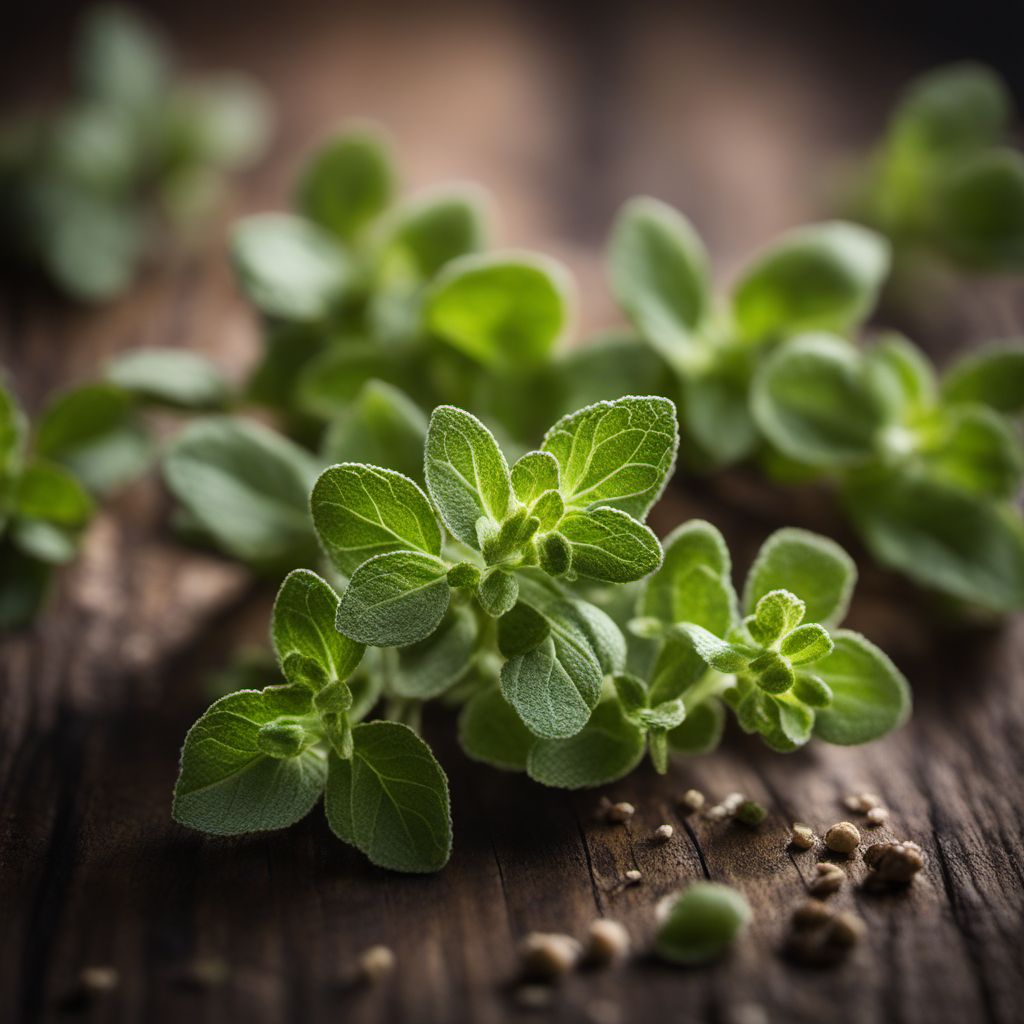
Ingredient
Oregano
The Herb of Mediterranean Delights
Oregano is a perennial herb with small, oval-shaped leaves that are dark green in color. It has a strong aroma and a slightly bitter, peppery taste. The herb can be used fresh or dried, and its flavor intensifies when dried. Oregano leaves are typically dried and crushed to release their essential oils, which contribute to its distinct flavor and fragrance.
Origins and history
Oregano has a rich history rooted in Mediterranean cuisine. It has been used for centuries in Greek, Italian, and other Mediterranean cuisines, where it is considered a staple herb. Oregano was highly valued in ancient Greece and was believed to bring good luck and joy. Today, it is widely cultivated and enjoyed in various parts of the world.
Nutritional information
Oregano is a nutrient-dense herb that provides essential vitamins and minerals. It is a good source of vitamin K, iron, and antioxidants. Oregano also contains compounds with antimicrobial properties, which may offer health benefits. However, it is typically consumed in small amounts, so its nutritional impact may be limited.
Allergens
There are no known allergens specifically associated with oregano. However, individuals with allergies to other plants in the Lamiaceae family, such as mint or basil, may experience cross-reactivity and should exercise caution.
How to select
When selecting fresh oregano, look for vibrant green leaves that are free from wilting or discoloration. The leaves should have a strong aroma, indicating freshness. Dried oregano should be purchased from a reputable source and stored in an airtight container to maintain its flavor and potency.
Storage recommendations
To preserve the freshness of oregano, store fresh sprigs in a plastic bag in the refrigerator. Alternatively, the herb can be dried by hanging the sprigs upside down in a well-ventilated area. Once dried, remove the leaves from the stems and store them in an airtight container away from heat and light. Properly stored, dried oregano can retain its flavor for up to six months.
How to produce
Oregano can be easily grown in a home garden or even in pots on a windowsill. It thrives in well-drained soil and requires ample sunlight. The herb can be propagated from seeds or cuttings, and regular pruning helps promote bushier growth. With proper care, oregano can be harvested and enjoyed fresh throughout the growing season.
Preparation tips
Oregano is a versatile herb that can be used in a variety of dishes. It is a key ingredient in Mediterranean cuisine, adding flavor to classic dishes such as pizza, pasta sauces, and Greek salads. Oregano can also be used to season roasted vegetables, grilled meats, or even infused into oils and vinegars for added depth of flavor.
Availability
Oregano is widely available in grocery stores, supermarkets, and farmers markets, especially in regions with a strong Mediterranean influence. It can also be found dried or in the form of oregano oil or capsules in health food stores or online.
More ingredients from this category

Lemon thyme
The Zesty Herb

Winter savory
Savoring the Season: Exploring the Delights of Winter Savory
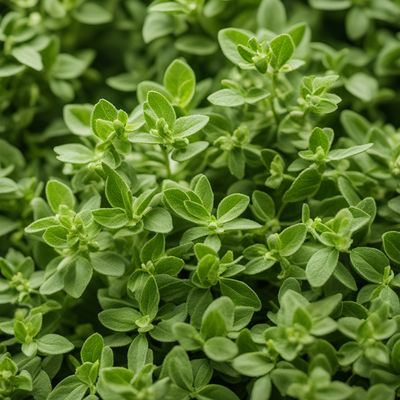
Cretan oregano
The Fragrant Herb of the Mediterranean

Lemon savory
The Zesty Herb: Lemon Savory and its Citrusy Twist

Thyme
The Fragrant Herb: Thyme

Summer savory
"The Herb of Warmth and Flavor"

Creeping thyme
The Fragrant Delight of Creeping Thyme
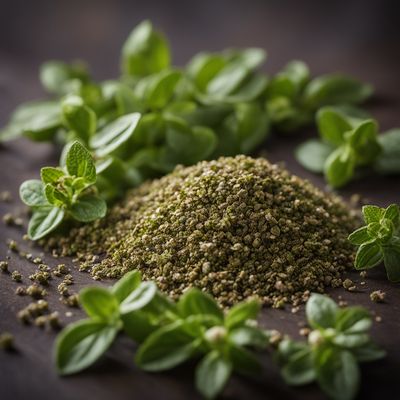
Syrian oregano
The Exotic Herb: Syrian Oregano

Mastic thyme
The Fragrant Herb: Unveiling the Aromatic Delights of Mastic Thyme

Marjoram
The Fragrant Herb: Marjoram
Recipes using Oregano » Browse all
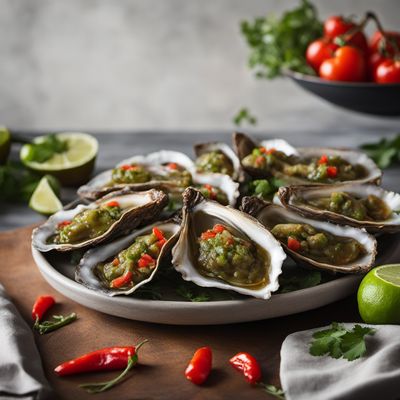
Veracruz-style Oysters with a Fusion Twist
Oceanic Fusion: Veracruz-style Oysters with a Global Flair

Almogrote - Canarian Cheese Spread
Savory Delight: Canarian Almogrote Cheese Spread

Czech Bread Soup
Hearty Czech Delight: Bread Soup

Homemade Italian Dressing
Zesty Herb-infused Italian Dressing

Chicken Parmigiana
Elevated Chicken Parmigiana: A Nouvelle Cuisine Twist

Madrid-style Shabu-shabu
Sizzling Spanish Shabu-shabu: A Fusion of Flavors
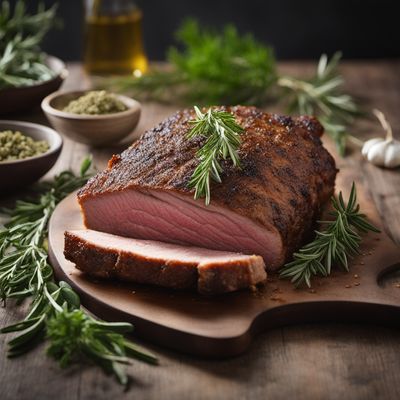
Swiss-style Roasted Pork with Herb Crust
Alpine Herb Roasted Pork: A Swiss Delight

Grilled Greek Lamb Chops with Lemon and Herbs
Mediterranean Delight: Grilled Greek Lamb Chops Bursting with Citrus and Aromatic Herbs

IONA-style Rabbit with Peppers and Olives
Atlantic Island Delight: Savory Rabbit with Peppers and Olives

Donzelle with Tomato Sauce
Savory Tomato Donzelle Delight
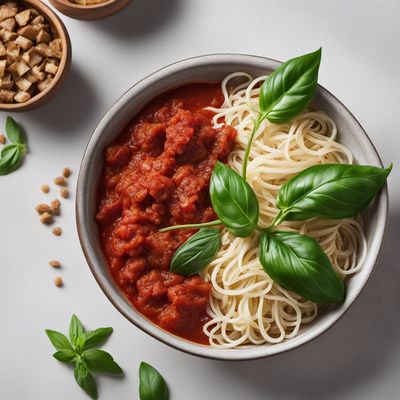
Moka alla Pugliese
Savor the Flavors of Apulia with Moka alla Pugliese

Puerto Rican-style Leek Stew
Savory Leek Delight: A Taste of Puerto Rico